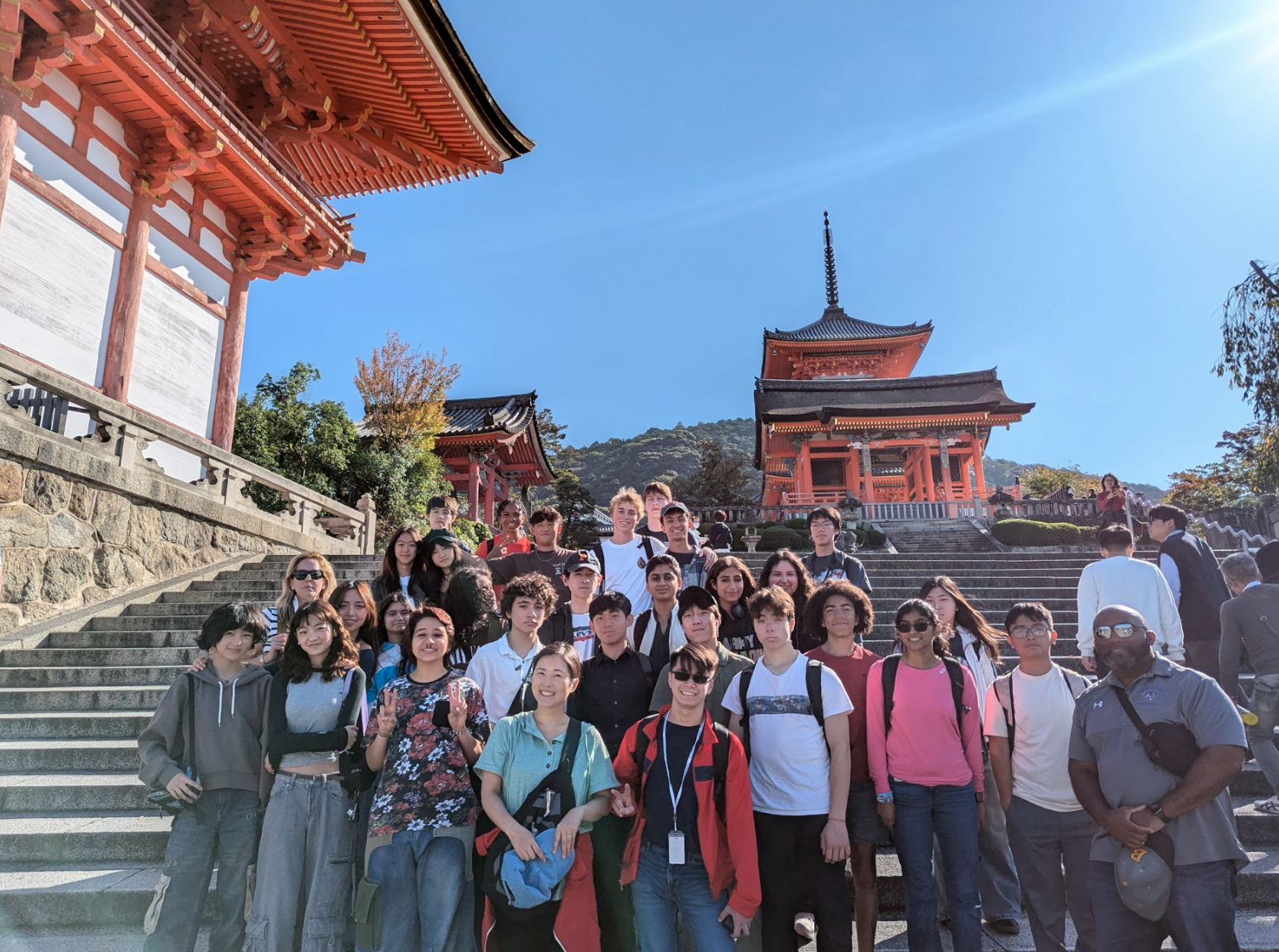PHS travels to Japan
October, 2024
This November, 32 PHS students embarked on an eleven-day cultural exchange trip to Japan. Organized by Japanese teacher Risa Sakakibara, the trip spanned Kyoto, Nara, Kanazawa, and Tokyo. Including a homestay with host families, the trip offered PHS students an immersive experience of Japanese culture, traditions, and daily life.
“The itinerary was carefully designed to include as many cultural experiences as possible, including activities at Izumigaoka High School and visits to notable sightseeing locations,” said Sakakibara.
At the trip’s first stop, Kyoto, students explored landmarks such as the Kiyomizu and Kinkakuji Temples, experiencing a blend of history and nature through traditional architecture and Bonsai gardens. The students then visited the city of Nara, where they toured Nara Park, fed free-roaming deer — a display of the city’s connection with nature — and explored the Great Buddha Hall at Toda-ji Temple.
“I had many valuable opportunities to directly engage with Japanese history, its traditions, and culture,” said Oscar Kim ’26. “I really enjoyed interacting with the local residents and visiting historical sites and temples.”
Beyond sightseeing, students were able to closely interact with Japanese life through a homestay experience, in which they attended Izumigaoka High School in Kanazawa alongside a partnered exchange student. At the high school, several first-year classes were available for PHS students, including science, physics, mathematics, modern Japanese, classical Japanese, and social studies.
“The [school] treated us amazingly. It was super welcoming. Everything was catered to us,” said Kona Macallister ’26. “One thing that surprised me, though, is they actually don't [wear] shoes in high school. They wear slippers. So you take your shoes off at the front door and you wear slippers, which is pretty cool.”
To further immerse themselves in the experience of Japanese high schoolers PHS students engaged in extracurricular activities at the high school, participating in debate, traditional Japanese calligraphy, and practicing in mochi-tsuki, the Japanese process of pounding rice to make rice cakes.
“This diverse range of activities provided the students with a comprehensive look at Japanese high school life, blending cultural traditions with academic and interactive experiences,” said Sakakibara. “The warm and welcoming attitude of the students and teachers at Izumigaoka High School made these experiences even more enriching and unforgettable.”
After school, the Japanese exchange students often acted as tour guides for PHS students, bringing them to downtown Kanazawa temples, stations, and convenience stores. Returning home to the houses of their Japanese exchange students, PHS students were often faced with language barriers with host families.
“With the parents, there was a language barrier, but I was able to communicate with them pretty decently with my knowledge of Japanese,” said Macallister. “My [exchange] student was very good at English, so it really helps with the language barrier and trying to communicate with everyone.”
But despite these communication barriers, host families welcomed PHS students into Japanese culture, teaching them how to play Japanese board games and cook Japanese food, such as Takoyaki.
In Kanazawa, the group also explored the Higashi Chaya District, known for its traditional tea houses, and strolled through the Kenrokuen Garden, one of Japan’s most celebrated landscapes. Other experiences included participating in a tea ceremony and riding a bullet train to Tokyo.
In Tokyo, students explored more modern neighborhoods such as Shibuya, Harajuku, and Akihabara, learning the public etiquette and the pace of daily life in Japan.
“[In Japan], people strictly adhere to the rules. So in New York City, for example, many people jaywalk. But that's not the case [in Japan], as everyone waits for the stop lights to go off, and they also keep the cities really clean,” said Kim. “I think in Japan, [people] keep to themselves in public. But if you go to American cities, people are generally loud [and] rowdy.”
But after the week and a half trip to Japan, the students walked away with more than just a better understanding of Japanese culture, but a broadened interest in the Japanese language.
“I think that this trip has really motivated me to learn more Japanese and try harder in class, because I want to be able to actually go there in the future, someday, and be able to interact with local residents in fully Japanese,” said Kim.
Through overcoming language and culture barriers, Sakakibara feels that students were able to build long-lasting connections with their counterparts overseas.
“This trip was far more than a sightseeing excursion—it was an extension of education, a platform for deep learning, and a step toward fostering mutual understanding between cultures.” said Sakakibara. “I am profoundly grateful to the staff and families in Japan, as well as the many individuals who supported this program. I hope this exchange becomes a bridge between our two schools and nations, strengthening the bonds of friendship and collaboration for years to come.”